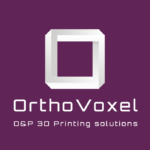How do Soft-Touch solutions extend the range of applications for silicones by providing sliding and anti-fouling properties?
Well known for their excellent mechanical properties, the applications of silicones can be limited by their adhesive nature. Soft-touch solutions solve this problem by adding sliding and new properties to the final material.
Why use a Soft-Touch solution for silicones?
How did Soft Touch solutions for silicones emerge?
Silicone elastomers are used in many sectors and types of applications. In both industrial and medical applications, they are appreciated for their thermal and chemical stability. Also, they are recognized for their excellent mechanical properties: elongation, tensile strength, durability, and biocompatibility. However, their use is limited by the adhesion and stickiness they present. This feature limits the ability of external parts to slide over the silicone, or the silicone on itself . This feature therefore restricts the use of silicone for parts subject to movement, sliding or friction. In order to solve this problem, solutions have been developed, and a new proposal exists, the Soft-Touch Coating presented below.
What are Soft-Touch solutions for silicones?
In the form of a coating to be applied or as an additive, their name comes from their ability to provide a soft, sliding feel to the completed object. They usually provide additional resistance to abrasion and scratching. Also, they provide antifouling properties (dirt, dust, etc.). Note, that some of the solutions can affect the mechanical properties of the silicones. COP team can support you to optimize the use of these Soft-Touch solutions and the performance of your silicones.
How to characterize the sliding character of a silicone?
The main objective of this type of solution is to reduce the friction coefficient. The friction is the resistance which limits the sliding of one surface on another. The friction coefficient (CoF) is the ratio of the frictional resistance force to the normal or perpendicular force.
A low friction coefficient means that the two surfaces will easily slide or roll over each other, while a high friction coefficient means that the two surfaces will resist movement and may even stick to each other. The friction coefficient depends on the properties of the two surfaces, such as their roughness, hardness and chemical composition.
To illustrate this metric: 0 is no friction and materials with a CoF of less than 0.1 are considered lubricant. The CoF depends on the types of materials in contact. The calculation method for CoF of plastic films and sheets, including silicone elastomers, is standardized in ISO 8295:1995. It determines the static (μ_s) and kinetic (μ_k) friction coefficients. These can be measured using a specially equipped tensile test bench.
What types of Soft-Touch solutions for silicones?
There are many types of Soft-Touch solutions for silicones on the market, depending on the application process and the materials used. For example, we can provide a Soft-Touch effect by the use of an additive to a two-component silicone mixture (RTV-2). We can also use a coating type post-treatment with the use of a silicone or polyurethane film. There are many different ways of application depending on the user’s requirements.
Discover our different products: https://cop-chimie.com/en/product-category/silicone-en/
What are the uses of Soft-Touch solutions?
These solutions are recommended for friction sealing parts such as seals or connectors. They are also used for parts exposed to dust and dirt (masks, hoses, cables, handles, plugs) or for repositionable parts (straps, buckles, belts, mats, pads, etc.). In the design, automotive or electronics sectors, they improve the comfort of use of parts and the appearance. In 3D printing, they improve the surface finish of printed parts.
How do we implement Soft-Touch solutions at COP Chimie?
AST or Soft-Touch additive: In-situ application
We use a three-component solution: incorporating the additive into the mixture of parts A and B of RTV-2 silicones. In the days following polymerisation, the additive oxidises in contact with the surface of the parts and progressively gives the desired sliding properties.
VSK ou coating Siliskin : Post-treatment application
Our other solutions are used as a post-treatment on the parts, by applying an extremely thin veil. The parts to be coated must be ready to receive the coating: the surfaces must be cleaned, de-greased, dried and exempt of any source of inhibition. About Siliskin coating, the parts need to be post-cured to polymerise. (Note that this solution is only valid for VSK, not for our polyurethane film).
Spraying method
Spraying with a spray gun provides the best results: evenness, homogeneity and thinness of the coating. The gun allows you to adjust the air supply, material flow and spray pattern. If the structure of the part does not allow the solution to be sprayed onto the areas to be post-treated, other methods can be used. However, we recommend using spraying for best results.
Dipping method
The part is dipped into a tank containing the Soft-Touch product. It is manipulated in order to coat the whole part. The part is left to drain to remove the excess coating, then put in a oven for post-curing.
Brush method
The coating is applied to the workpiece with a brush (or sponge, gloved finger, etc). The advantage is that the areas with and without coating are well controlled. However, the final appearance is less uniform, thick er and keeps the streaks of the brush application. Once coated, the part is put in the oven to start the polymerization of the coating .
How are our Soft-Touch solutions being used?
In external orthopaedic devices

In industry
Silicone elastomers are widely used in industry, particularly for their high mechanical properties (elongation, tensile strength), high resistance to temperature changes and durability. Parts that typically have interface functions must have a low friction coefficient (sealing, force or motion transmission, fluid transfer). Soft-Touch solutions meet these needs by reducing it considerably.
3D printing
Siliskin can be used in additive manufacturing for the post-treatment of 3D printed silicone parts . It improves the quality of the surface of the parts by smoothing the streaks, increases their resistance to abrasion and scratching and reduces their tendency to dirt. This coating adds value to your silicone 3D printing projects. We offer a range of printable two-component silicones that can be used with this coating.
Our Soft-Touch solution: Siliskin coating
Siliskin is a two-component silicone coating used on RTV, LSR or HTV silicone surfaces. This coating has been formulated to be applied by spraying, dipping and brushing on silicone parts. It significantly reduces the friction coefficient, has high abrasion and scratch resistance. It adapts to the elasticity of the substrate used. It decreases the dirt and the capture of dust.
New formula
After several months of development, COP has created a new and more effective formula for Siliskin. It now includes the addition of a third component that boosts the product’s performance and increases its sliding effect.
Find out more on the following link: https://cop-chimie.com/en/product/siliskin/
Compatible silicones
This coating can be used and sticks to all silicone surfaces (LSR, RTV, HTV). It is compatible with our COPSIL range of two-component silicone elastomers, with our COPSIL HTV One Component 35, 55 and 70. It can also be used on our COPSIL 3D printable silicones to improve surface finishes.
Tools for implementation
Mixing should be done with a high speed mechanical mixer (wire drill) and a dispersing mixing paddle (product link). For this purpose, we offer packs of 50 cl mixings pots (https://cop-chimie.com/en/product/mixing-pots/).
– Siliskin is a three-component system used in a ratio of 100:100:30 and mixed for one minute with mechanical mixer
– The pot life after mixing of the preparation is 36 hours at room temperature.
We recommend to apply this coating by spraying with a compressed air spray gun. COP can provide you with a spray gun with a gravity cup capacity of 450 mL adapted to the product. We also strongly recommend the use of protective gloves, goggles and a suitable mask.
Our other Soft Touch solutions
AST or Soft-Touch Additive is an additive introduced during the mixing process. It is directly integrated into the two parts of the RTV-2 silicones and does not require any additional application steps. The Soft-Touch effect can also be achieved with polyurethane coating. This will provide additional protection for your parts. If you have any questions about these solutions, please contact us via the contact form.
Our advice
Many factors can affect the final result of Soft-Touch solutions : the surface conditions of the substrates, the design of the part and the method of application selected. We suggest that you conduct tests before making your final application. If you want to know more about these solutions and their application, you can get in touch with us on our contact form.












